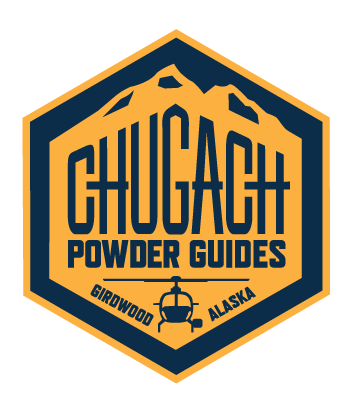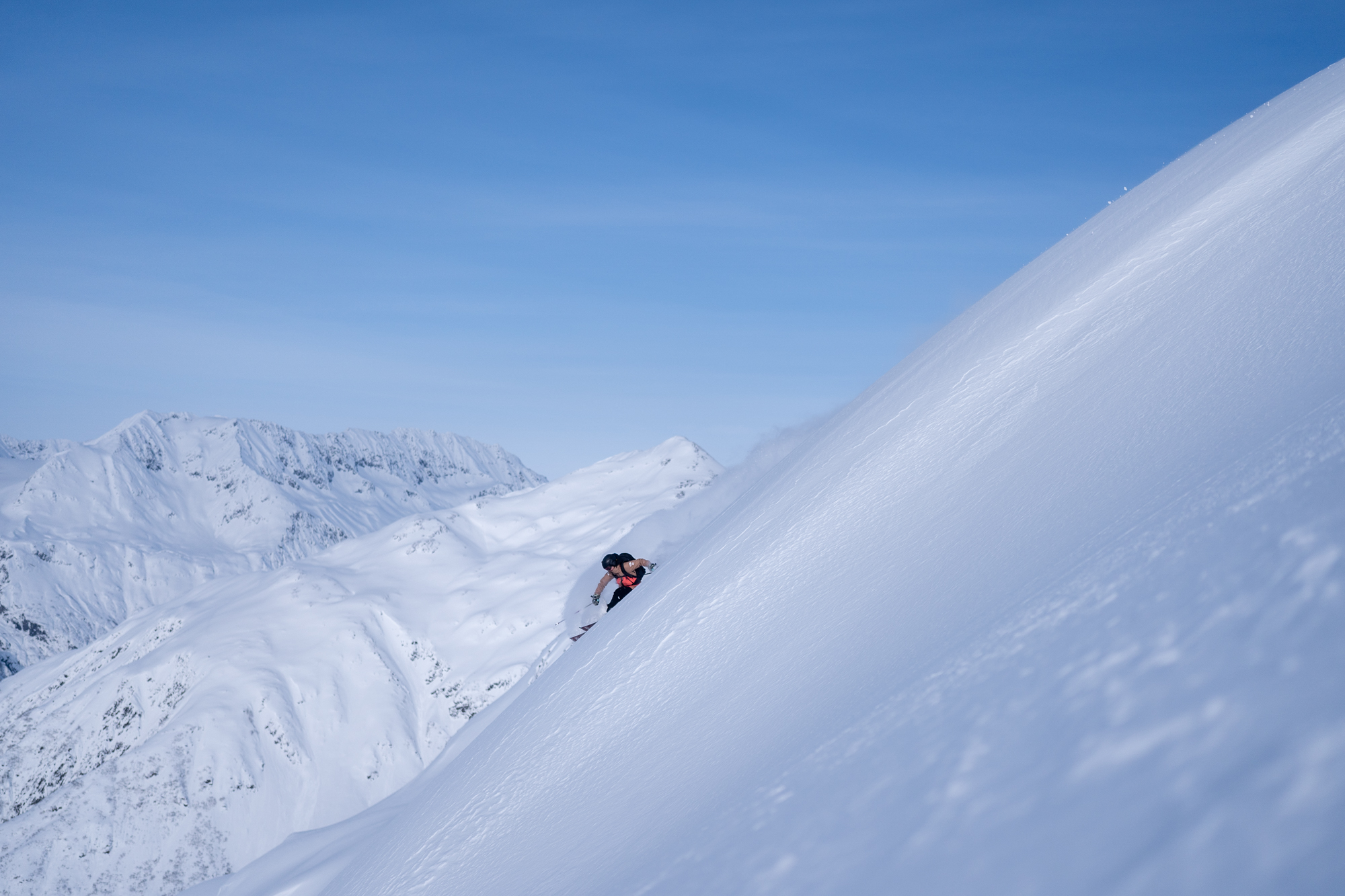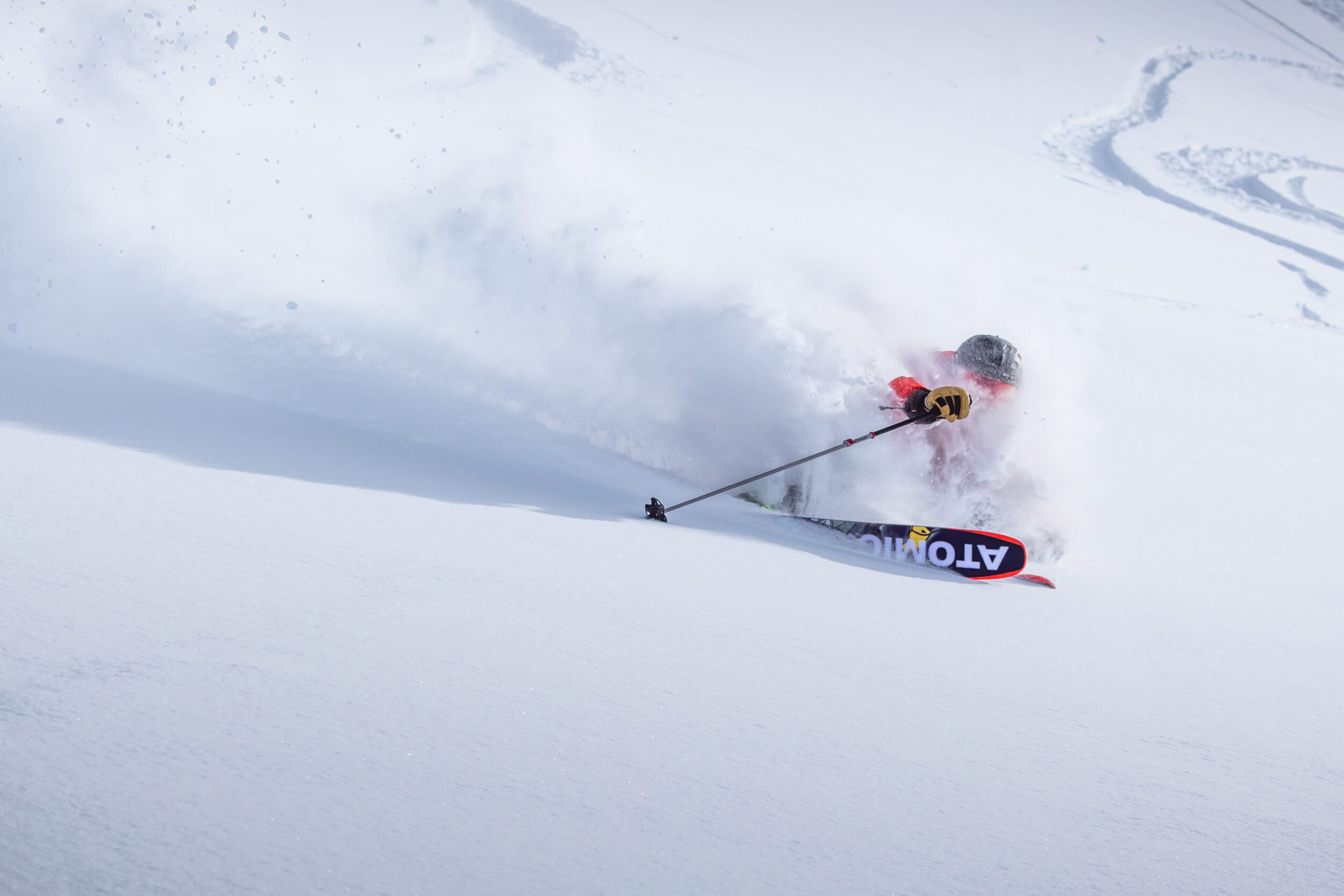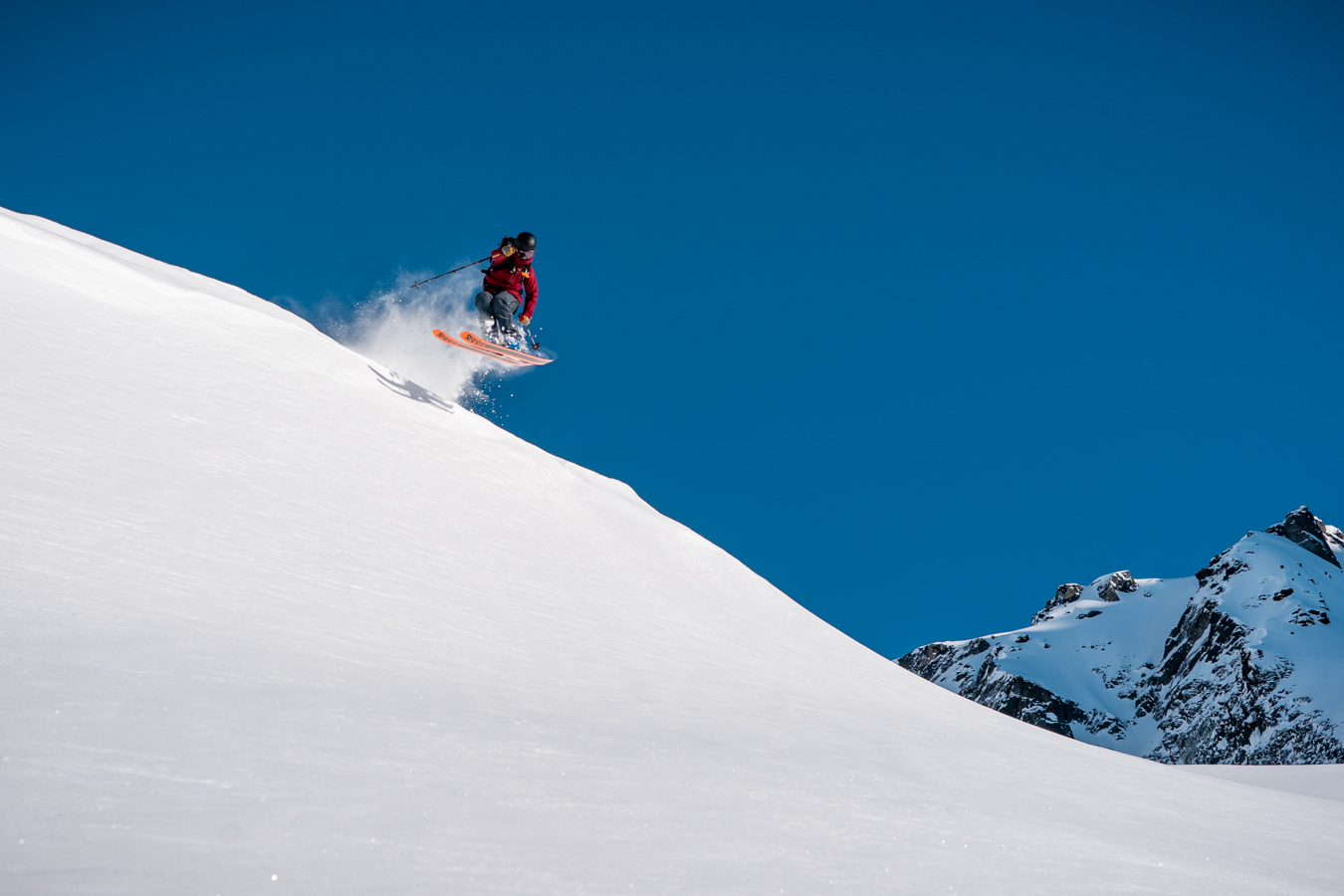What does a typical day at CPG look like? Because so much of heli skiing is weather-dependent, that’s a tough question to answer. Let’s run you through a perfect blue-bird fly day, and then we’ll talk about weather delays and cancellations.
If it is the first day of your heli ski trip, or if you are only joining us for one day, your morning will begin with a safety briefing. We will pick you up at the Hotel Alyeska lobby at 8 AM and drive down to our hangar/ base of operations, which is only about a mile away. You will definitely want to have eaten breakfast, or grabbed something to take with you at this point. These first mornings are busy, but if you are skiing or riding with us for multiple days, you will have much more time on subsequent mornings. It’s also important to bring all your gear with you because you will not be returning to the hotel prior to skiing. You don’t need to be wearing your ski boots, but it’s helpful if you show up in your layers and outerwear for the day.
Your safety briefing and equipment orientation will last about one hour. After the briefing you will get booted up and fully dressed to ski/ride. At this point a variety of things can happen, depending on where your guides will be taking you that day. If we are flying to any of our northern zones, we will depart directly from base. In this case we just stay at the hangar and begin shuttling groups into the field. You may wait anywhere from 10 to 30 minutes for your group’s turn to fly. If we are skiing in our eastern or southern zones, we will hop back in the vans and drive to a staging area that is closer to the zone. We do this to shorten the heli shuttle, which saves time and fuel. The van ride will either be 15 or 30 minutes depending on which staging area we use.
This is a good time to mention cell service. There is some reception for the first 10-15 minutes of the drive, but as soon as we drive further or fly into the mountains, plan on being out of reception for the day.
It’s now 9:30-10:00 AM and we are flying all groups into their zones. You may wait a short amount of time at the staging area or in the field while groups are flown in. Once everyone has been shuttled to the zone, things speed up quickly. Now the fun begins, and we ski and ride until the helicopter needs to refuel. We also use the refuel cycle as our lunch time. It’s hard to pin down a specific time when this will occur, but typically we get 2-4 hours of skiing in before the helicopter needs fuel. These numbers can vary based on how many groups we have, how far away we are skiing, the terrain we are in and other factors. Generally fuel/lunch time allows for a longer ski session in the morning and a shorter one in the afternoon. If you are day skiing on the vertical agenda, the average day is probably 10K of vert before lunch and 6-8K after lunch.
Lunch is now over and it’s anywhere from 1:00-3:00 PM. We are refueled and ready to keep skiing. Oftentimes we change venues after lunch and go seek out some different runs. This may have already occurred, or maybe we will stay in the same zone for the day because the skiing is great and there’s still plenty of fresh snow. These factors vary greatly with the situation, but for the sake of a “typical” day, we’ll say we switch to a second venue for our afternoon session. After a short wait while we shuttle the 2-4 groups, we get back to ripping laps of powder skiing with a helicopter! On the day/vertical agenda we will ski until we’ve reached our allotted 16-18K of vert. At that point your guides will ask you if you want to continue skiing at our overage rate (which is a great deal, and you’re already there!), or if you’ve had your fill for the day. Some days you run out of time or the weather deteriorates and overage is not an option, in which case we will begin shuttling groups in. Let’s say we have finished our vertical by 4PM, and we have some time to ski into overage. The guides will figure out who wants to stay, who wants to go, and then make a plan. If you are joining us for a semi-private package or a private charter, the decision to keep skiing or call it a day gets a little more nuanced. The time of year also plays a major role. With all that being said, the average time to return to the CPG hangar is 4:00-6:00 pm, but sometimes it’s earlier and sometimes it’s later.
That is a summary of an average bluebird fly day. If you have already been through the safety briefing, the earliest we would pick you up to launch is 9:15 AM, so you will have an extra hour in the morning for breakfast. You will know when a pickup time is announced by checking our status line at 907-566-1144, or by communicating directly with your guide.
Now let’s say the weather is not conducive to aviation, and we need to go on a weather hold. If you have just been through the briefing, your guide will most likely return you to the hotel for the weather hold, so that you can ski Alyeska. If you have already been briefed, you will check the status line or hear from your guide. Weather holds come in all shapes and sizes. Sometimes it’s almost viable to launch, but we know the trend is improving, so we wait an hour or two while the weather stabilizes. Other times it’s storming and completely unviable, but we don’t want to cancel the day because we may get lucky in the afternoon. Most often we call weather holds every hour until we either fly, or cancel the day. For example, it’s the second day of your 4-day package and you call the status line at 8:00 AM to see if you will be launching at 9:30 (our earliest launch time). You find out you are on a 10:00 AM weather hold. This means you will get more information at 10:00 AM. That information will be 1 of 3 things- another hold, a launch or a cancel. You call the status line again at 10:00, and it has been moved to a 11:00 or 12:00 weather hold. We often skip 11:00 and go straight to 12:00 because the chair lifts open at 10:30 and we want guests to ski on the weather hold, not worry about getting picked up. If the weather clears during that time, we will call at 12:15 pickup and launch the helis, which still leaves us plenty of time to get a full day in. It’s worth knowing that if you are part of a 4-day package or private charter, your guide will have a text thread with the group, so you won’t have to call the status line every hour. Day guests will want to call the status line every hour to stay in the loop.
Also of note, if you have cat skiing backup reserved, there are a few differences. In the event of a weather hold, you will load up in the cat and head out to the cat area. If the weather then clears, the heli will fly in and pick you up to go heli skiing. If it doesn’t, you will finish the day in the snowcat. We typically return from a snowcat day around 5:00-6:00 PM.
The latest time we will launch depends on the month. In early February it’s rare to launch later than noon because of the limited daylight. From late February through March it’s not uncommon to launch at 2:00 PM. In April it’s possible to launch as late as 4:00 PM. These late launches don’t always give you a full day of vertical, but any heli skiing is better than none, so we like to capitalize on the long spring days. If you are launching later in the day, expect to be home later as well. The latest you could be home in February is around 5:00-5:30, but in April you may be home at 7:00-7:30.
This should give you a rough outline of your day with and without weather holds. If the weather is particularly bad, we may cancel the day earlier than the previously mentioned latest launch times. Regardless of when it happens, as soon as we cancel heli skiing for the day you are free to enjoy one of the many down day activities that set Girdwood apart from other destinations. The most popular non-heli ski activity is… skiing! Most of your guides will use storm days to enjoy laps at Alyeska, but there’s plenty of other options as well.
As you can tell, the days are very dynamic. It’s not uncommon for guests to have a hard time with the unknown nature of heli skiing. With regards to weather holds, many people are reluctant to ski at Alyeska because they are worried about missing a launch. Know that we’ve spent many years building and refining our operations to take advantage of the ski resort, and other Girdwood amenities. We’ve designed the whole program to let you ski on weather holds, so as long as you are checking that status line or communicating with your guide, you are going to be fine. While the unknown can be a challenge at first, experienced heli skiers quickly learn that it’s inherent to the pursuit, and even part of the fun.



